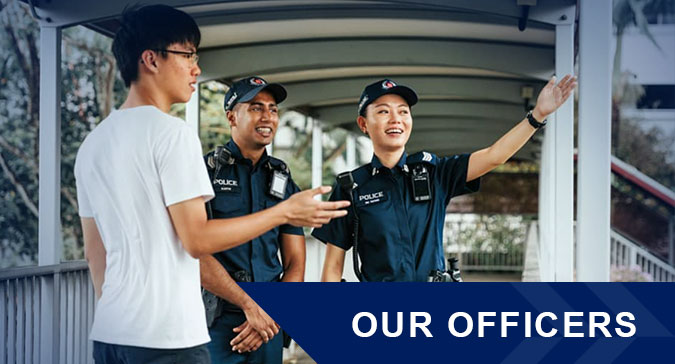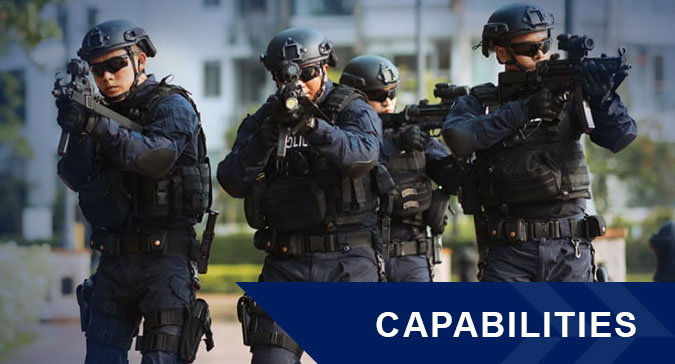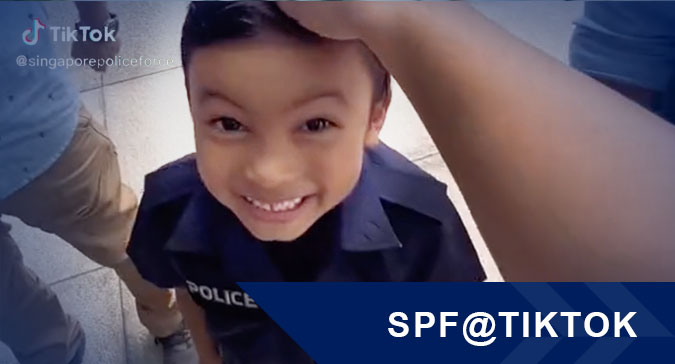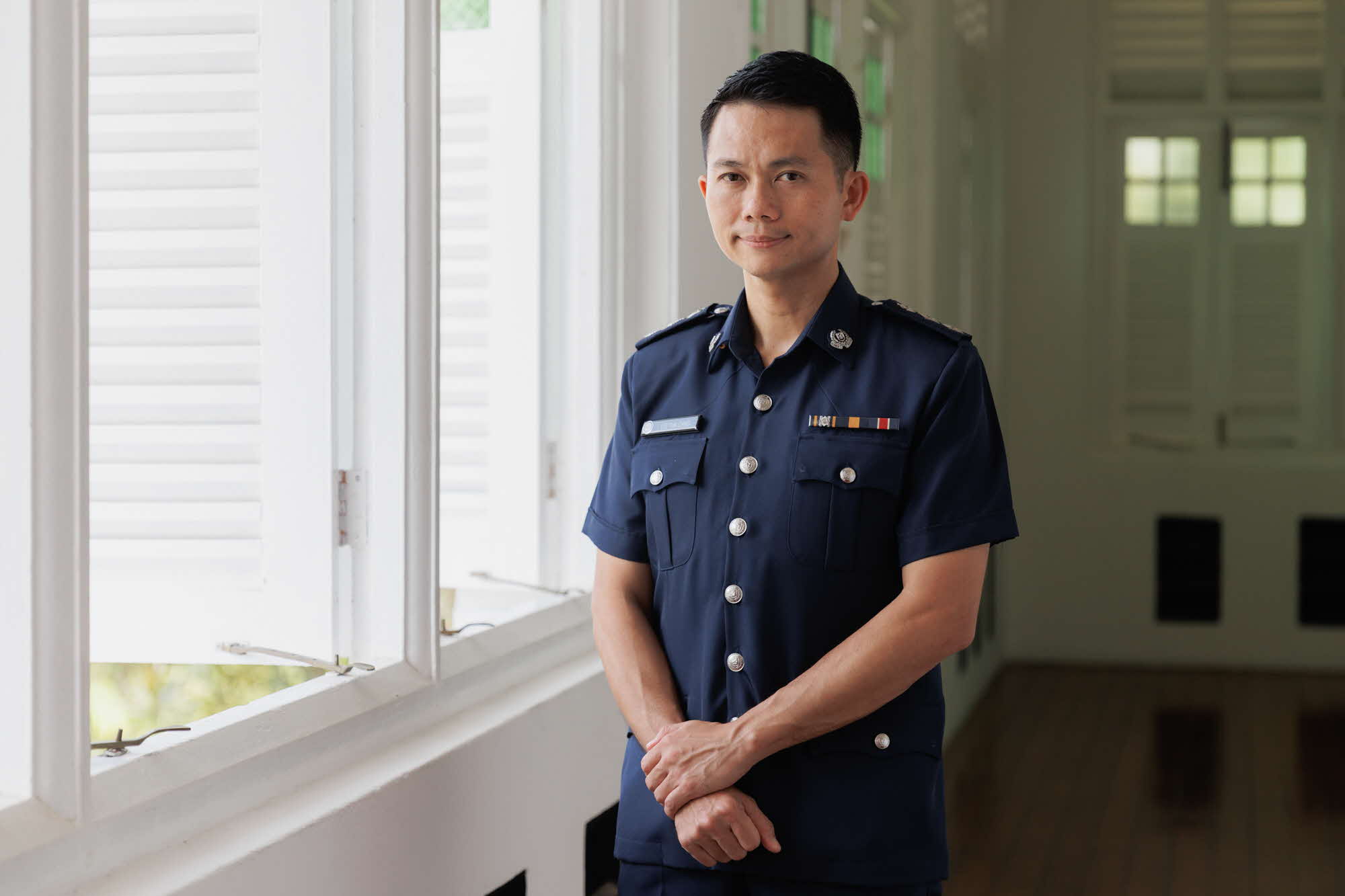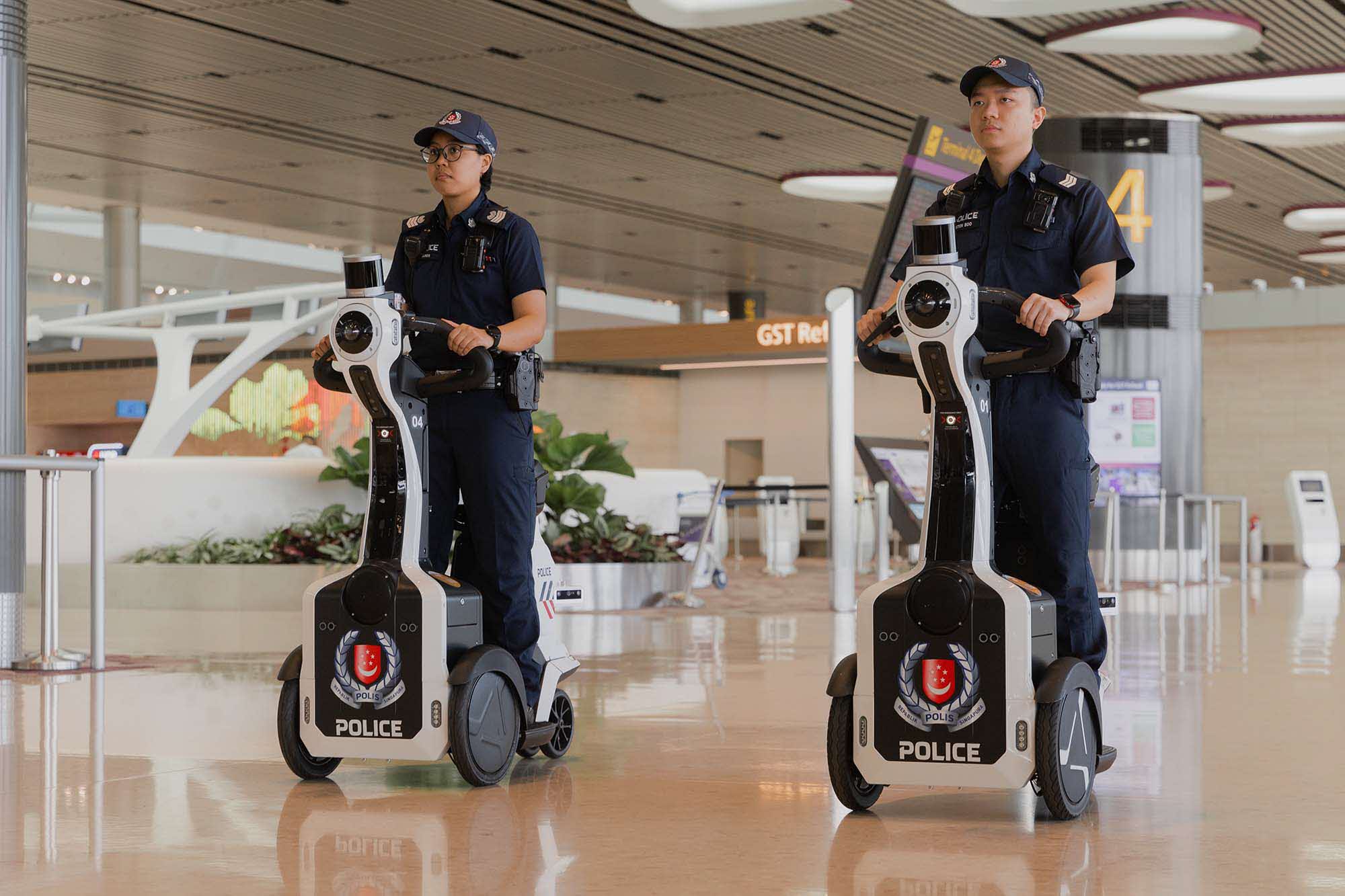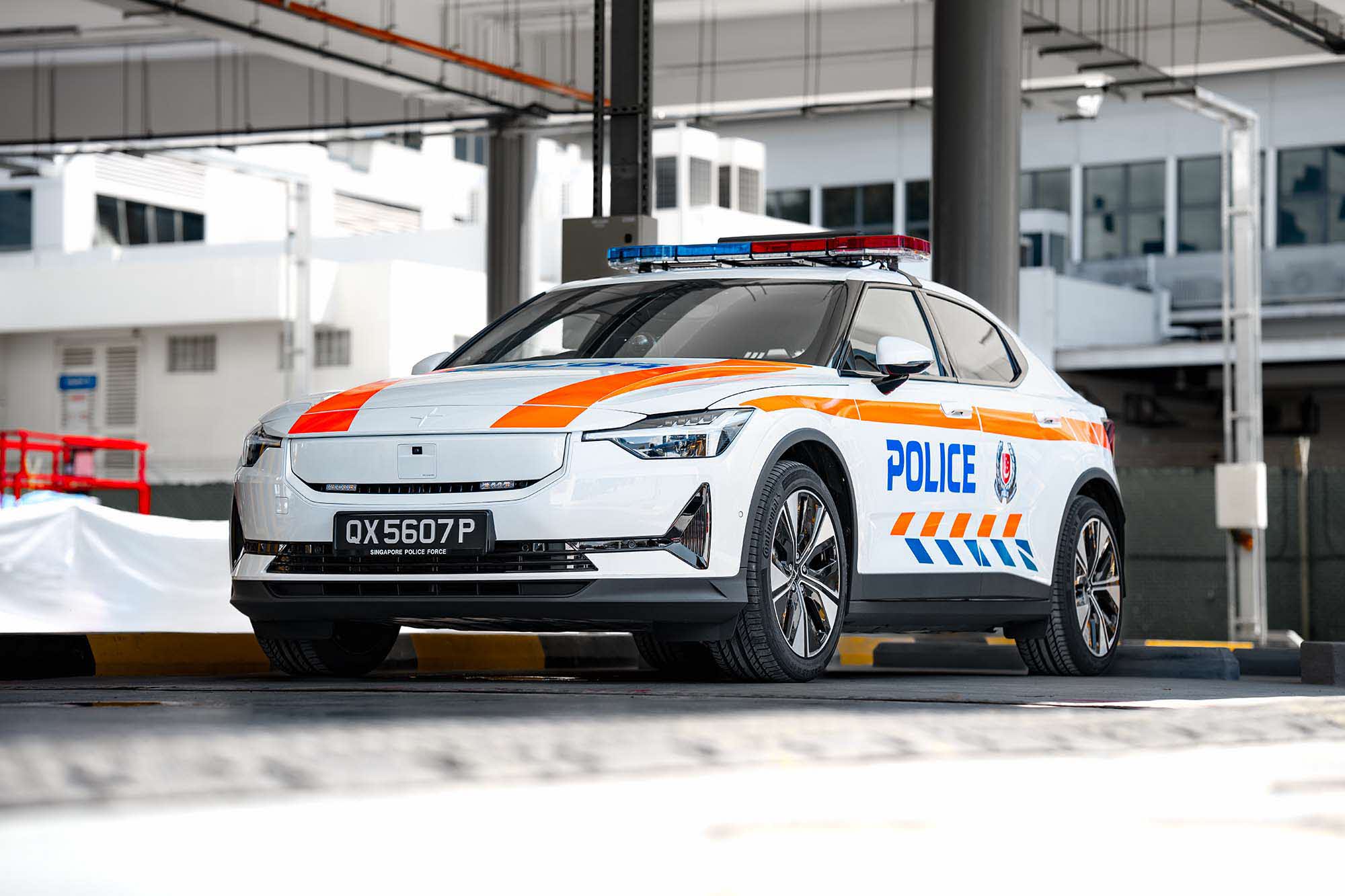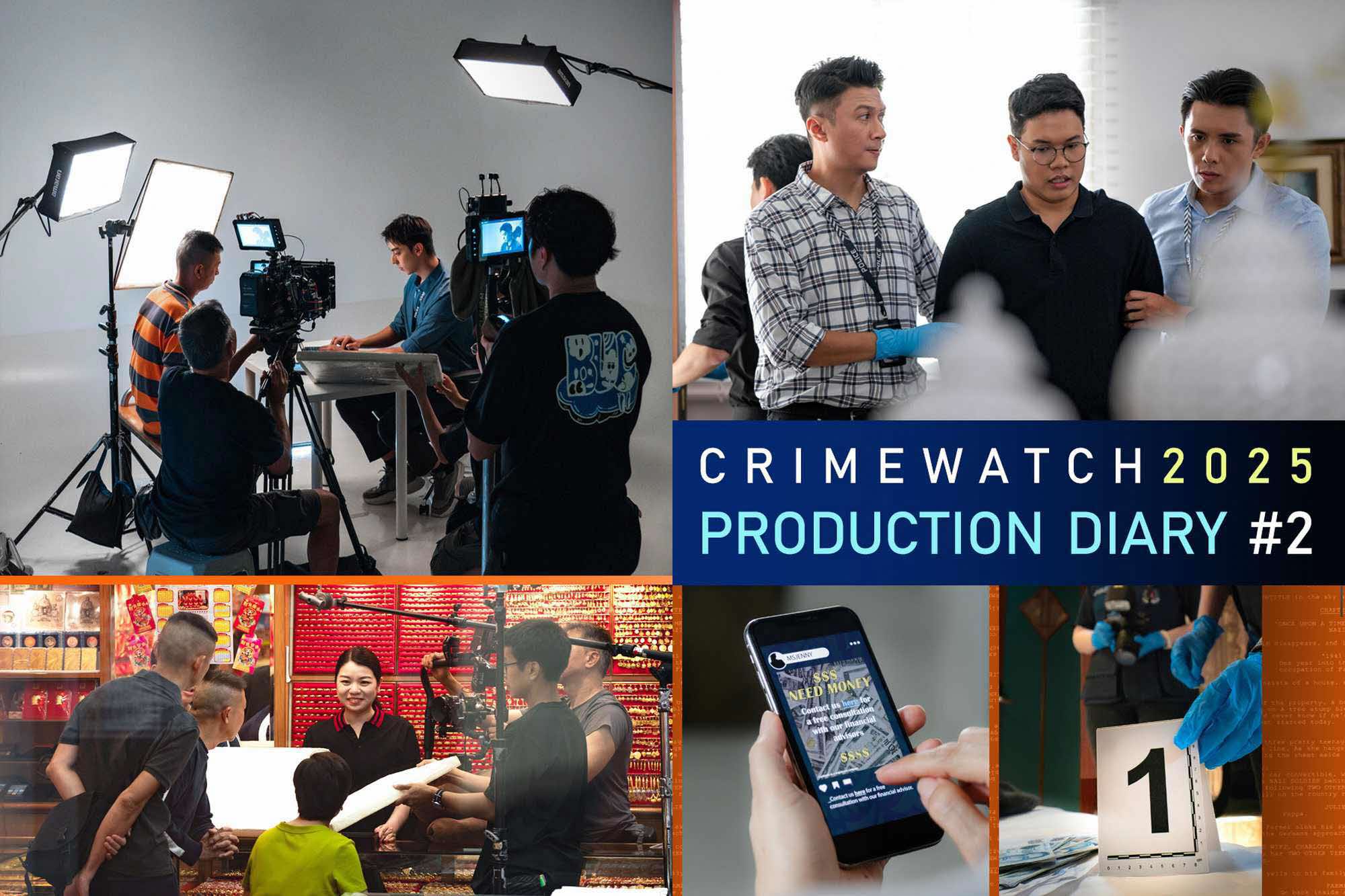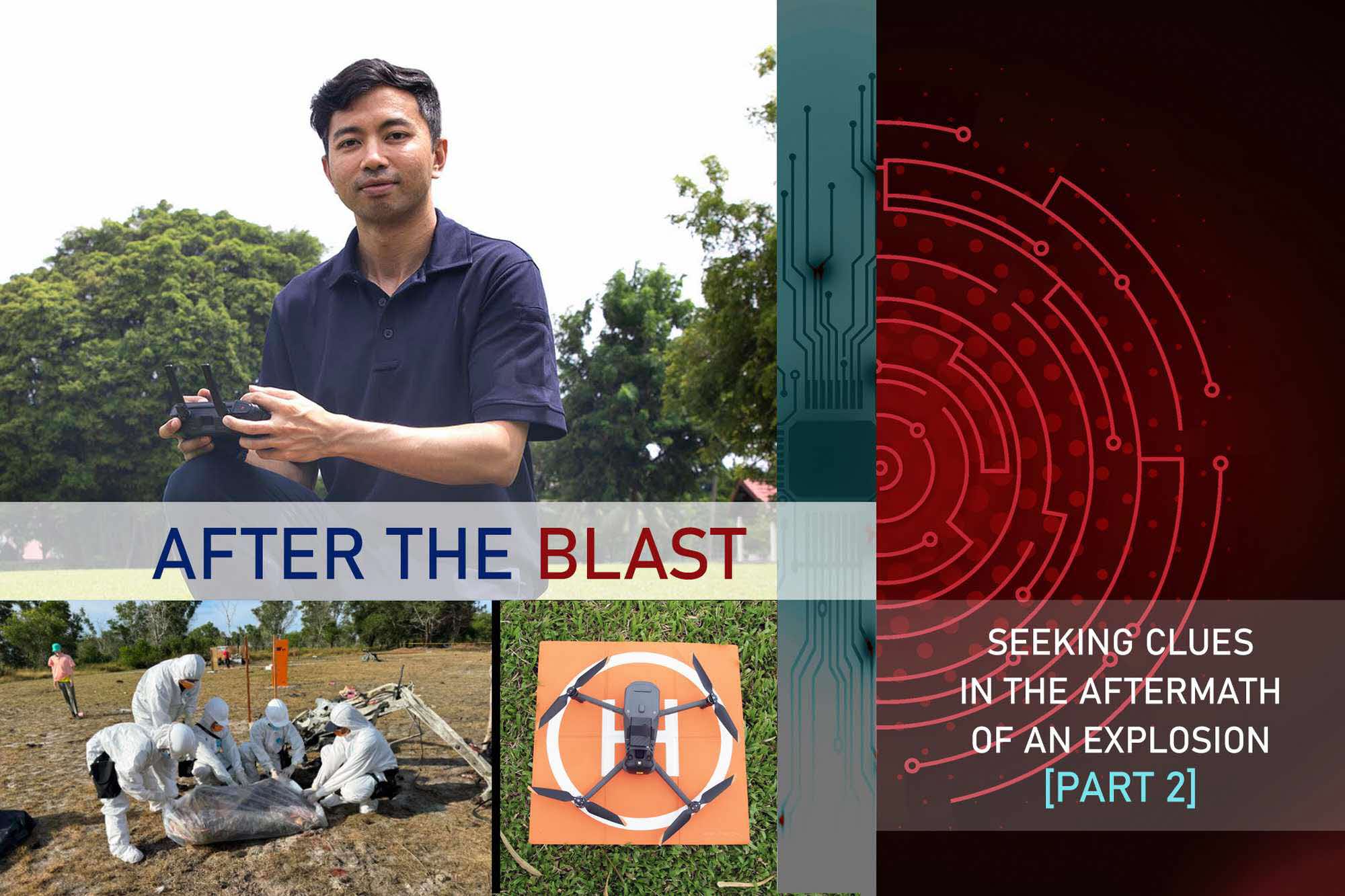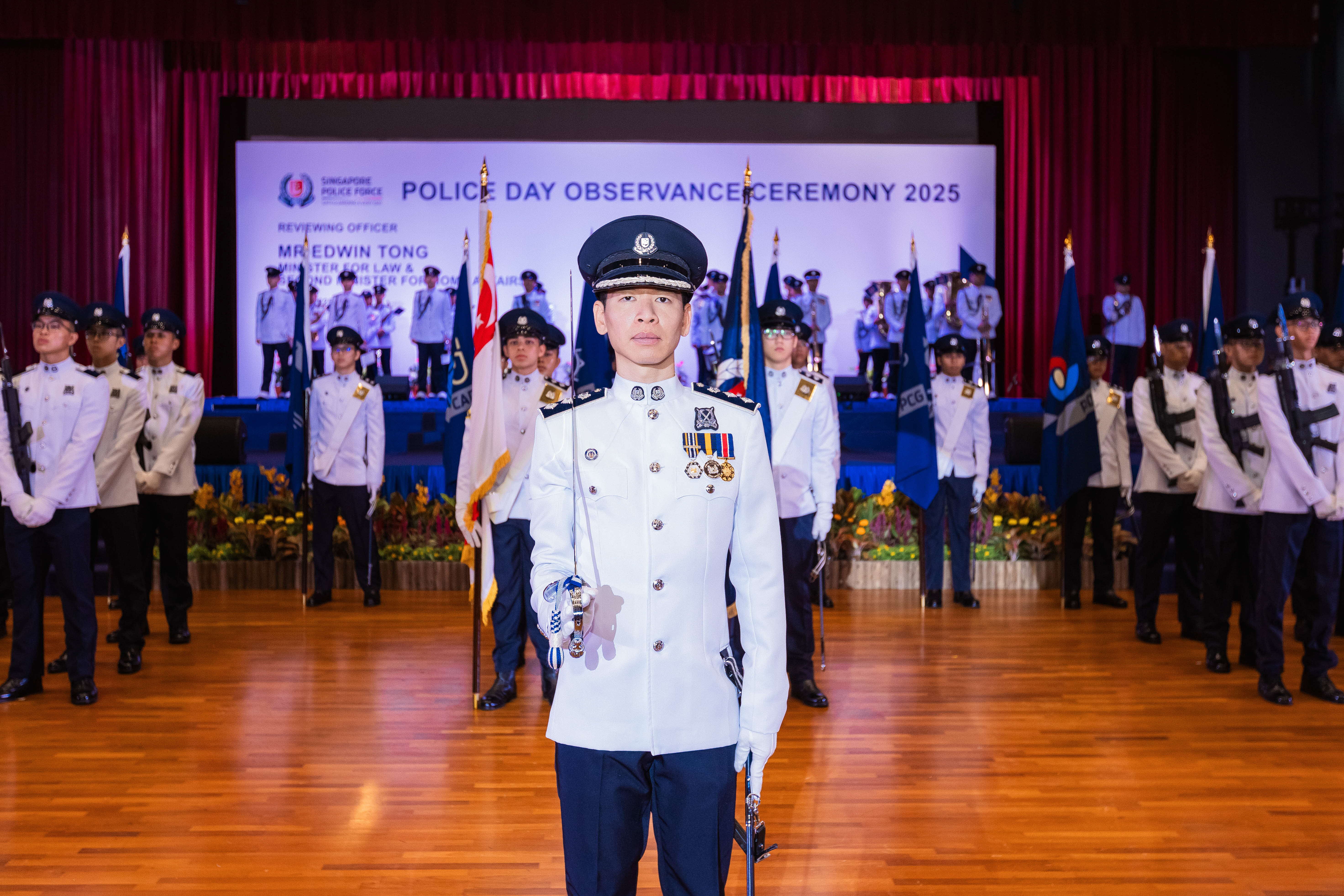How officers resolve situations on the ground with necessary force to ensure minimal harm.
By: Christabelle Lim
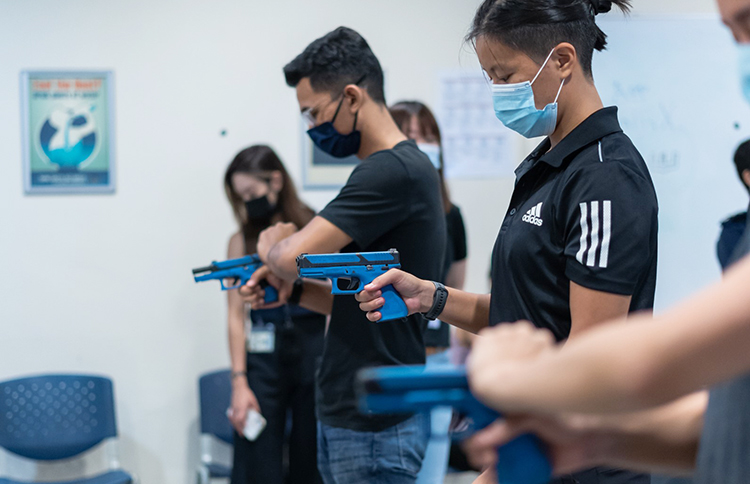
Police officers work in a dynamic environment and routinely attend to situations where they may have to use necessary force. Such situations include protecting or saving lives and preventing an offence, as well as arresting suspects who’ve committed offences.
In such situations, the use of force by Police officers may be necessary to prevent the suspect from harming others (including officers) or themselves.
Officers put their safety and lives on the line every time they intervene to protect the public and prevent an offence from being committed. To gain a deeper understanding of how Police officers are trained in the use of force, Police Life joined a training session for members of the media at the Home Team Academy (HTA).
First Time with a Firearm
I took off my ear mufflers and surveyed the target. The five training rounds I was given all hit the paper target. “Not too bad for half a day’s practice,” I thought.
The weight of a pistol is heavier than most people realise. Aside from its physical weight, it also comes with the weight of responsibility and duty. At the Singapore Police Force’s (SPF) Training Command (TRACOM), we were taught the basics of handling a pistol, from how to stand to how to grip, rack, aim and fire.
Throughout the session, we were also given insights into the attention needed when handling firearms, with the instructors drilling into us the importance of treating every firearm as if it was “live” and loaded.
“Live” Firing Practice
We were given the opportunity to witness a practice shoot with “live” rounds. We shuffled to the firing range with our ear mufflers in hand, crowding around the booth (at a safe distance) where the trainer was preparing his weapon.

“Conditions on the frontlines are dynamic. It’s where our officers put their lives on the line.”
A silence descended at the range. The trainer practised drawing his pistol from his holster. Rack, aim and squeeze. “Krrr---chkkk.” This was the sound of the hammer hitting the chamber where the round would be.
Shuffle. The trainer positioned himself in a strong stance.
“Load holster,” came the instruction. Click.
“Ready? Watch your front. React and shoot. React and shoot.”
Whirrr. The paper target started moving towards the trainer.
“Police, stop!” shouted the trainer. “Put down your weapon!”
Bang! His first shot reverberated around the firing range.
“Put down your weapon, don’t move!” he shouted again. Bang!
“Do not move! Put down your weapon now!” Bang! Bang! Bang!
“Put down your weapon!” Bang bang bang!
The last shot echoed in our ears.
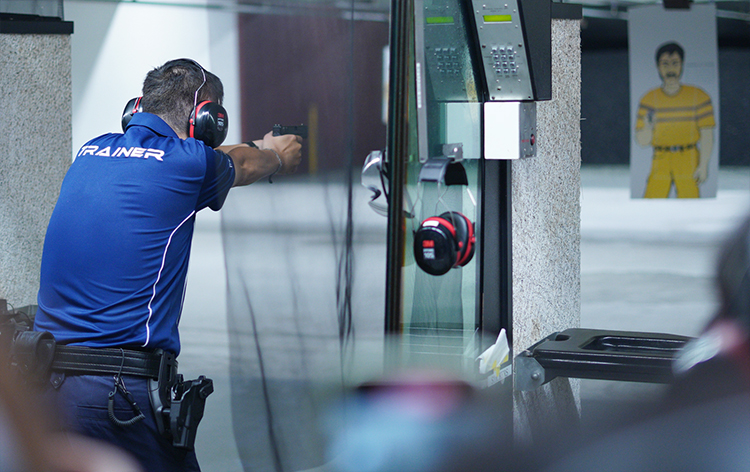
In situations where there’s an imminent threat of grievous hurt or death, officers may have to take decisive action and deploy their firearms. Officers are trained to fire at the centre of the body in such fast-changing situations, as this provides a higher probability of hitting and stopping the target while also reducing the risk of injuries to innocent bystanders.
A stationary paper target was one thing, I thought. The possibility of life or death was another altogether.
Quick on the Draw
Next, we headed to the HTA Training Village for a simulated shooting exercise. For this exercise, a trainer playing the role of an armed assailant will charge at us through a crowd from about seven metres away, simulating an armed attack. Our task was to respond to the “armed assailant” with a training pistol (which fires ink pellets).
To make things easier for us civilians, we’d have the training pistol already unholstered, racked and readied – so we’d just have to raise it, aim and fire before the assailant crossed a blue “safety line” just one metre away from us.
Meanwhile, the trainers who were paired with us were equipped the same way as ground patrol officers, with their guns holstered and secured.
Ready, Steady…
During the simulation, we found that there was no time to react; the first few groups didn’t even manage to fire off a shot before the assailant crossed the blue line. We were simply not prepared for the speed and shock of having someone charge at us.
In that one second, however, our partnering officer was able to assess the situation and take decisive action by applying proportional force to the perceived threat.
I knew the assailant was going to charge at me. I fired off a shot. Bang!
The exercise ended. My partnering officer asked me kindly, “Did your shot hit the assailant?
The officer who was roleplaying as the assailant also piped up: “Yeah, I didn’t feel the shot. You might have missed! Let’s have another go!”
Bang! Bang! Bang! The exercise ended. This time, one shot did hit the assailant, but not where I was aiming at. I wondered where the other two shots went.
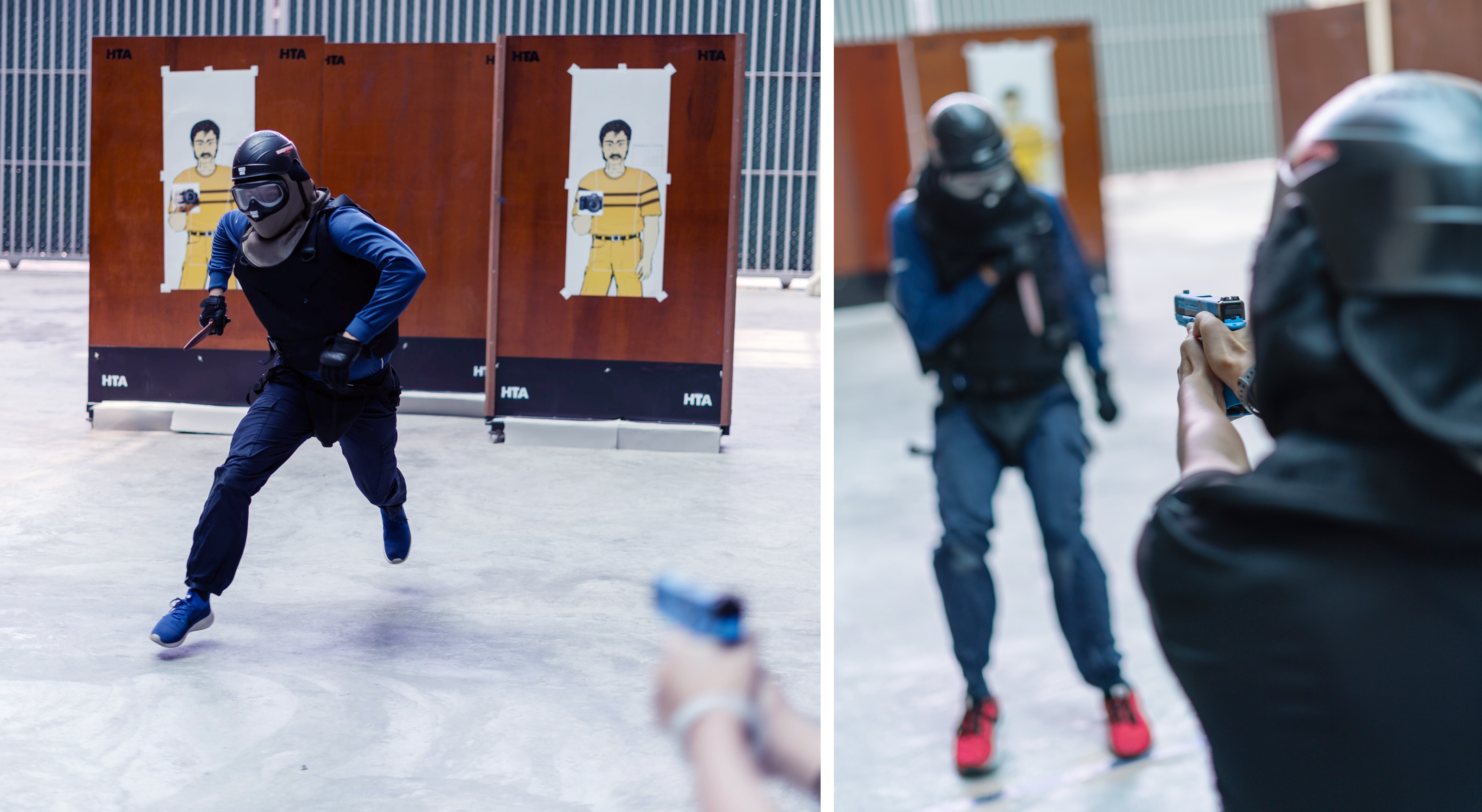
By the end of the exercise, there were pink ink spots on the boards behind the assailant, indicating our shots had landed among bystanders, while blue ink spots on the assailant indicated where the trainers’ shots had landed – a mark of their experience and training.
Thrown in the Dojo
Police officers are also trained in the use of less-lethal force techniques such as contact tactics, batons and Tasers to de-escalate and contain situations in their day-to-day operations.
At the HTA dojo, we practised using the straight extendable baton and went through the typical contact tactics that Police officers use to bring down, subdue and immobilise a suspect.
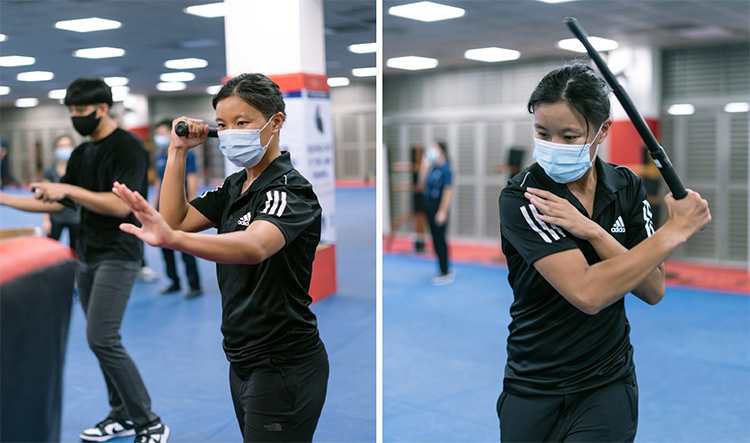
Pinning Down the Technique
It’s hard to explain how a wrist lock or take-down works unless you’ve been immobilised by such moves.
During the demonstration, the trainers skilfully applied their techniques to the levers of our body – our joints and other vulnerable points. Not surprisingly, when we practised these techniques for ourselves, we seemed to be grasping at straws. Thankfully, we were compliant “suspects” when we practised the moves on each other. This isn’t what Police officers encounter on the ground.
Faced with an uncooperative suspect, the trainers gave verbal instructions such as, “Sir, Sir, I need you to stand, please,” demonstrating their professionalism in a potentially violent situation. But the suspect refused to comply with the instructions to stand, stop or respond.
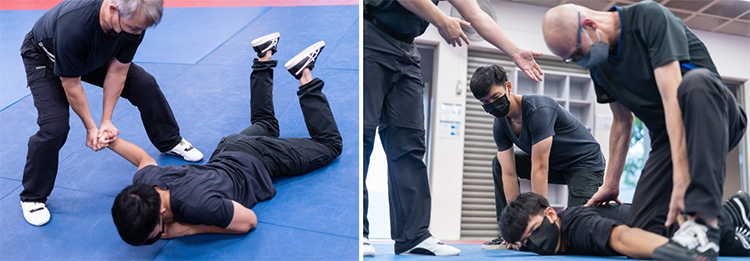
To ensure everyone’s safety, two trainers flanked the suspect and performed an arm lock on each of his arms, while a third trainer took care to protect the suspect’s head by cushioning it until the suspect lay prone on the ground.

“At the end of the day, our Police officers’ use of force is to resolve the situation in the best possible way – with minimal harm.”
The Taser: A Shock to the System
Another option in the use of force is the Taser. When a Taser is deployed, two probes will be fired from it, and when they land on the suspect, a surge of electricity is delivered to the suspect’s body, which causes an uncontrollable contraction of the muscles. This results in the temporary physical incapacitation of the suspect.
The Taser’s effectiveness depends on where the probes land on a suspect. The greater the spread (or distance) between the two probes, the more effective the surge is. In addition, one or both probes may miss, not embed properly or get dislodged even if embedded properly earlier.
All these scenarios can happen in a dynamic situation. The clothes worn by the suspect, the distance between the suspect and the officer as well as movements by the suspect may affect the successful deployment of the Taser.
Training for the Frontlines
Five Taser-related scenarios were played out in the dojo at the end of the day. We were tasked to work in pairs.
The aggressive stick-wielding suspect, Tasered.
The drunk suspect, Tasered.
A routine spot-check left us reeling when the suspect suddenly turned violent. He was promptly Tasered.
The self-harming suspect, Tasered.
The aggressive knife-wielding suspect lunged at us. We couldn’t draw our firearms in time.
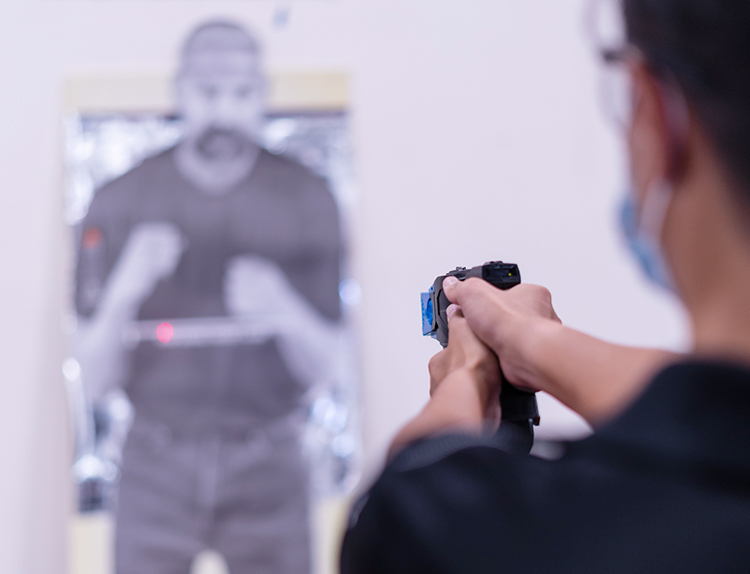
Using the Taser, it was a relief to know that it didn’t have a live cartridge with an actual charge. Compared to the firearm, it wasn’t difficult to fire. The challenge was in not knowing whether the probes would land as intended. Seeing how I’d previously missed while firing a single bullet, I didn’t know if two probes gave me a higher chance of landing a hit, or just two chances to fail!
Regular Training
All cases involving the use of firearms and Tasers are reviewed thoroughly to ensure that they’re in accordance with the Police’s doctrines and training. Officers are also required to undergo annual re-certification tests and training to maintain their proficiency.
“The SPF continuously reviews the training, procedures and equipment of our officers,” explained Superintendent of Police Toh Pei Lian, Commanding Officer of TRACOM’s Frontline Policing Training School. “This ensures that our officers can execute their duties effectively and safely in line with the current security climate.”
Conditions on the frontlines are dynamic. It’s where our officers put their lives on the line. At the end of the day, our Police officers’ use of force is to resolve the situation in the best possible way – with minimal harm.


